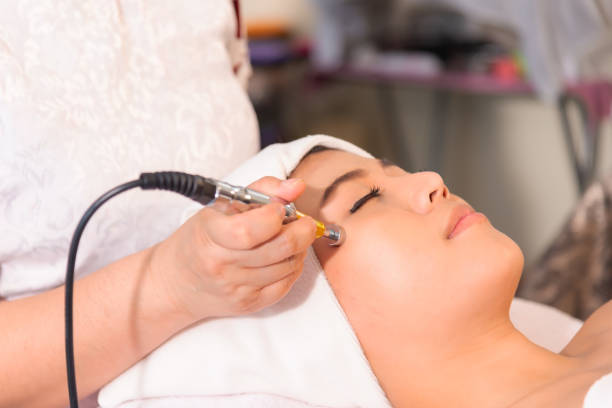
Dermaplaning has surged in popularity as a go-to skincare treatment for achieving smooth, radiant skin. This exfoliation technique involves using a specialized blade to gently scrape off dead skin cells and fine facial hair, revealing a brighter complexion underneath. Whether you’re considering a professional treatment or DIY dermaplaning at home, this ultimate guide will provide you with everything you need to know about the process, its benefits, potential risks, and tips for safe practice.
What is Dermaplaning?
Dermaplaning is a non-invasive exfoliation method that uses a sterile surgical scalpel to remove the outermost layer of dead skin cells and peach fuzz (vellus hair) from the face. The procedure can be performed by a licensed aesthetician or dermatologist in a clinical setting, or it can be done at home with the right tools and precautions.
Benefits of Dermaplaning
1. Exfoliation
Dermaplaning effectively sloughs off dead skin cells, promoting cell turnover and leaving your skin looking fresh and revitalized.
2. Smoother Skin Texture
Removing the fine hairs and dead skin creates a smoother surface, which can enhance the application and appearance of makeup.
3. Enhanced Skincare Absorption
By eliminating the barrier of dead skin cells, dermaplaning allows for better absorption of skincare products, making them more effective.
4. Immediate Results
Unlike some treatments that require multiple sessions to see results, the effects of dermaplaning are immediate, providing an instant glow.
5. Minimizing Fine Lines and Wrinkles
Regular dermaplaning can help reduce the appearance of fine lines and wrinkles by promoting collagen production.
Potential Risks and Considerations
While dermaplaning is generally safe, there are potential risks to be aware of:
1. Skin Irritation
Sensitive skin may experience temporary redness or irritation post-treatment.
2. Infection
Using a non-sterile blade or improper technique can lead to infections. It’s crucial to use clean, sterile tools and maintain proper hygiene.
3. Cuts and Nicks
Improper handling of the blade can cause minor cuts or nicks. It's important to be gentle and careful, especially around areas with uneven skin.
4. Not Suitable for Active Acne
If you have active acne, dermaplaning might aggravate it. It's best to wait until your skin is clearer before undergoing this treatment.
How to Dermaplane Safely
Professional Dermaplaning
Opting for a professional treatment ensures that the procedure is done safely and effectively. Here’s what to expect:
- Consultation: The aesthetician will assess your skin type and condition to determine if dermaplaning is suitable for you.
- Preparation: Your skin will be thoroughly cleansed to remove any makeup, oil, and dirt.
- Procedure: Using a sterile, single-use scalpel, the aesthetician will gently scrape your skin at a 45-degree angle in small, upward strokes.
- Aftercare: A soothing serum or moisturizer will be applied to calm your skin and enhance hydration.
DIY Dermaplaning at Home
If you prefer to dermaplane at home, follow these steps for safe and effective results:
- Gather Your Supplies: You’ll need a sterile dermaplaning tool, a gentle cleanser, and a soothing moisturizer.
- Cleanse Your Skin: Start with a clean face, free from makeup and oils.
- Prep Your Blade: Ensure your dermaplaning tool is sterile. Disposable blades are recommended for home use.
- Dermaplane: Hold the skin taut and gently glide the blade at a 45-degree angle in short, light strokes. Avoid applying too much pressure.
- Moisturize: After dermaplaning, apply a hydrating serum or moisturizer to soothe your skin.
Post-Dermaplaning Skincare
Proper aftercare is crucial to maximize the benefits and minimize any potential irritation:
- Hydrate: Use a gentle, hydrating moisturizer to replenish your skin.
- Sun Protection: Your skin will be more sensitive to UV rays, so apply a broad-spectrum sunscreen with at least SPF 30 daily.
- Avoid Harsh Products: Steer clear of exfoliants, retinoids, and other potentially irritating products for at least 24-48 hours post-treatment.
Conclusion
Dermaplaning is a highly effective exfoliation technique that can yield immediate, noticeable improvements in skin texture and radiance. Whether performed by a professional or done at home, it’s essential to follow proper procedures and aftercare to ensure the best results and minimize risks. By incorporating dermaplaning into your skincare routine, you can enjoy smoother, brighter, and more youthful-looking skin.
































